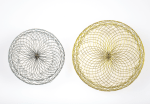Catheter ablation is an effective treatment for patients with atrial fibrillation (AF) refractory to the standard medical treatment. Verma et al. conducted a global, prospective, multicenter, nonrandomized study in which patients were operated with the PulseSelect system—pulmonary vein isolation using a nonthermal ablation system—and followed-up at 12 months. The system consists in nonthermal ablation, discharging...
Mechanical Aspiration in ST Elevation ACS
In ST elevation ACS the preferred treatment is primary PCI. However, one its limitations is thrombus presence and its distal embolization, which threatens microcirculation perfusion and is therefore associated to ventricular function deterioration and bad evolution. Manual thrombus aspiration has been tested in different studies but the problem remains unsolved; mechanical thrombectomy might be a...
ACC 2023 | YELLOW III Study. Effect of Evolocumab on Coronary Plaque Characteristics in Stable Coronary Artery Disease
Dr. Kini presented the results of the YELLOW III Study where she analyzed the effect of evolocumab on coronary plaque in patients with stable coronary artery disease. The study included 137 patients who underwent coronary angioplasty to the culprit vessel and endovascular imaging (OCT, NIRS/IVUS) to non-obstructive lesions (30%-50%). If their plaque was lipid-rich (defined...
Left Main Revascularization: 12 Year Registry in Canada
The current indication for severe left main lesion continues to be coronary artery bypass graft surgery (CABG) but percutaneous coronary intervention (PCI) has come far in this territory thanks to increasing operator experienced and the use of IVUS during procedures. At present, left main disease have a Class IIa indication in the American guidelines when...
Intracardiac Echocardiography to Guide Watchman Left Atrial Appendix Closure: Safe and Effective?
Left atrial appendix closure (LAAC) has become a frequent intervention for stroke prevention in patients with atrial fibrillation (AF) that make poor candidates for anticoagulation. However, it presents a complication with negative impact on procedural outcomes which is peridevice leak. To reduce these complications, we use intra-procedural imaging, the transesophageal echocardiogram (TEE) being the most...
Arterial Patency in Femoropopliteal Disease with Drug-Eluting Balloons
Follow-up of drug-coated balloon angioplasty in femoropopliteal disease in a real-world population. Using drug-releasing devices has decreased the rate of restenosis in obstructive femoropopliteal lesions compared with conventional balloons or conventional stents (bare-nitinol stent, BNS). Both in the placement of BNS and of drug-eluting stents (DES) there is a mechanical risk of stent fracture or...
Should We Use Drug Coated Balloons in Patients with Multivessel Disease?
Recent studies have shown that a drug coated balloons (DCB) based approach resulted non inferior when compared against drug eluting stents (DES) only approach in patients with instent restenosis and de novo lesions in small vessel disease. So far, two international consensuses have reported the use of DCB is feasible and safe to treat native...
BIODEGRADE: Does Stent Design Affect Long-Term Clinical Results?
Recent studies have shown that drug-eluting stents with biodegradable polymer and ultrathin struts are safe and effective, including low rates of stent thrombosis. This is why researchers conducted the BIODEGRADE (Biomatrix and Orsiro Drug-Eluting Stents in Angiographic Result in Patients With Coronary Artery Disease) study, which showed the non-inferiority at 18 months of ultrathin biodegradable polymer...
Impato da evolução tecnológica na redução da radiação ionizante
Por Dr. Carlos A.M. Gottschall.
Intracoronary Brachytherapy for Drug-Eluting Stent Restenosis
3 Year Clinical Outcome Analysis and Failure Predictors in the Use of Intracoronary Brachytherapy for Drug-Eluting Stent Restenosis In-stent restenosis (ISR) has been one of the greatest obstacles standing in the way of long term patency in percutaneous coronary interventions. However, the use of drug eluting stents (DES) and their development has helped reduce ISR...








